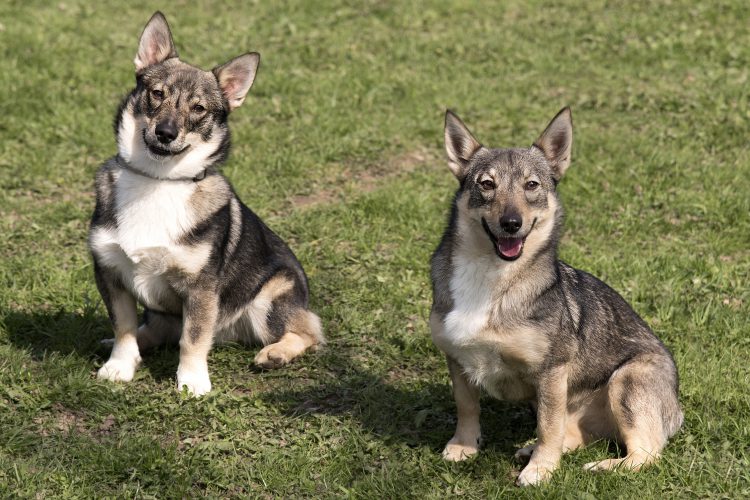
Welcome to the team, a historical breed.
The sample of Swedish Vallhunds in this study was from worldwide breeders. Lines represented in this initial sample hailed from Sweden, France, Finland, United States, Australia, Canada, United Kingdom, Netherlands, etc. It has been obvious that diversity is a worldwide concern of the Swedish Vallhund breeders from the very beginning, as they all worked together to seek a worldwide sample faster than any breed yet that has completed phase 1. We want to congratulate them on their efforts as a community.
This week results released for the Swedish Vallhund breed on 5/16/2018. You can read the full report here. What did the prestigious team at UC Davis and Dr. Pedersen DVM PhD, professor emeritus and world renowned expert in canine genetics, find?
Inbreeding
Dr. Pedersen found the following in terms of the inbreeding values of this population:
One half of the dogs have IR values between -0.115 and +0.085, which are respectable IR scores. One fourth of the population had IR scores from -0.115 to -0.239, indicating a population that was produced by parents that were as unrelated as possible. However, one fourth of the dogs had IR scores of +0.085 to +0.435. This proportion of dogs are quite inbred and even above the level of offspring of full-sibling village dog parents. The highly inbred and outbred populations cancel each other out in the breed-wide standard genetic assessment based just on unadjusted allele frequencies.
Interpretation? A fourth of this population is exceptionally inbred, however the other 3/4 of the breed have acceptable to very low inbreeding scores. The fourth of the population with very high inbreeding could be well served by verifying that their “outcross is really an outcross” or if their linebreeding is too close, with free or advanced analysis here at BetterBred.
Genetic Diversity at the Breed Level
Probably the most shocking statement I have yet to read in a breed report was this: “The black area is an estimate of the amount of genetic diversity still present among dogs that has been retained in Swedish Vallhund, i.e., 7%.“
Seven percent. SEVEN?! This is the lowest reported diversity estimate for a breed to date.
Let that sink in. This analysis compares a breed to the best possible case scenario, wild dogs sampled for their diversity.
How, then, could they possibly be healthy?
However, unlike other breeds where one or two alleles predominate, Vallhund allele frequencies are more even among the existing alleles. This indicates that selection of sires and dams has tended to use the full-spectrum of available genetic diversity present at the time of registry closure. Although registry closure precludes outside introgressions, the period following closure is usually a time of intensive breed refinement and selection of animals that will produce puppies breeding true to the standards. It appears that the founding population for the Vallhund were quite “refined” and “true breeding” from the onset, as further supported by the breed history.
What does this mean? The breeders in this tested sample have done a good job keeping the genetics that they have relatively well distributed, despite the genepool being depleted. We find that breeds that have done this, tend to be relatively healthy compared to those with severe bottlenecks. However, great care must be taken to ensure that this trend of distributed genetics continues, as more genetic loss may not be survivable for this breed. From the report: “A lack of genetic diversity does greatly limit a breed’s ability to adjust to further artificial genetic bottlenecks, whether they are geographic, catastrophic or genetic disease associated.”
DLA – Dog Leukocyte Antigen
A Look at the Dog’s Immune System!
Not surprisingly, given the breed’s analysis in the STR panel, it was also found that the found DLA haplotypes in this breed are the lowest numbers for any breed yet investigated. There are only six class 1 and 4 Class 2 DLA types.
The majority of these types are well distributed within the breed, with only a couple being in low representation. These are 1009, 1179, and 2022 (represented 5.1%, .9% and 5.1% of the tested haplotypes respectively).
Breeders should make an effort to redistribute and maintain these less common types so as not to lose them to genetic drift.
Conclusions
From Dr. Pedersen’s report: “A lack of genetic diversity does greatly limit a breed’s ability to adjust to further artificial genetic bottlenecks, whether they are geographic, catastrophic or genetic disease associated.”
This breed has a shockingly low amount of genetic diversity breedwide. Thankfully the breed remains relatively healthy, compared to many other breeds depleted genetically. The reason for this health is likely twofold. First, breeders of this sample have kept their genetics well dispersed within their population. Secondly, the founding dogs were likely also very healthy. This has been an advantage for this breed, however it would take one deleterious gene in a popular sire for this breed to suffer disastrous results.
Our Recommendation
Breeders in this breed should seek out more dogs that may have different genetics; testing more dogs and potential studs will help contribute. If no more is found, breeders should ensure that they maintain what they have, both in DLA and allelic richness, by keeping the genetics well dispersed. Our website will help with these goals, and we sincerely hope the community will embrace this to move forward.
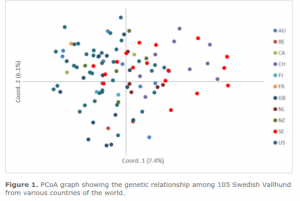
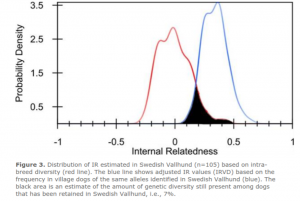
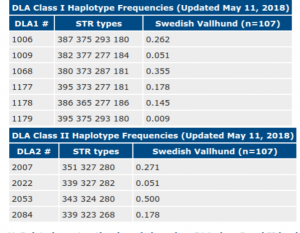
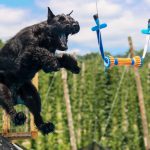 Previous Post
Previous Post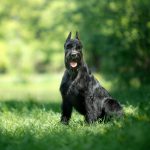 Next Post
Next Post


